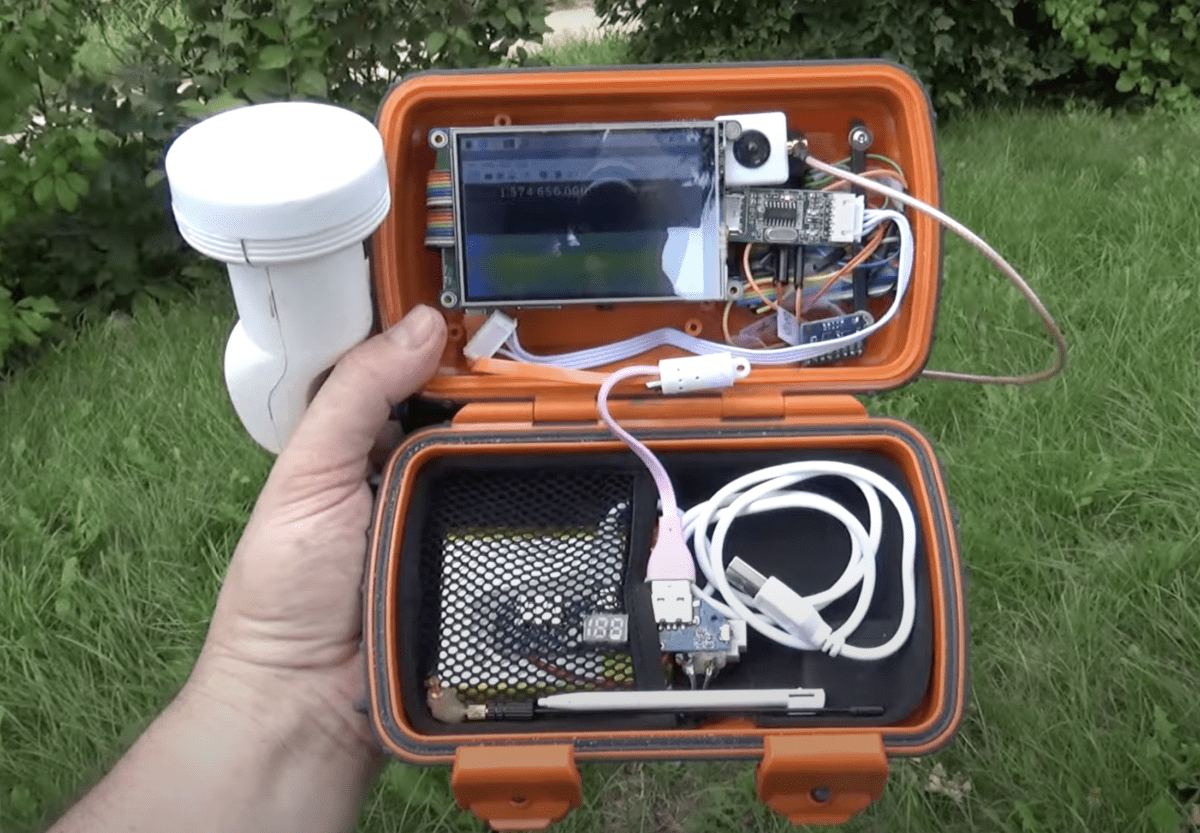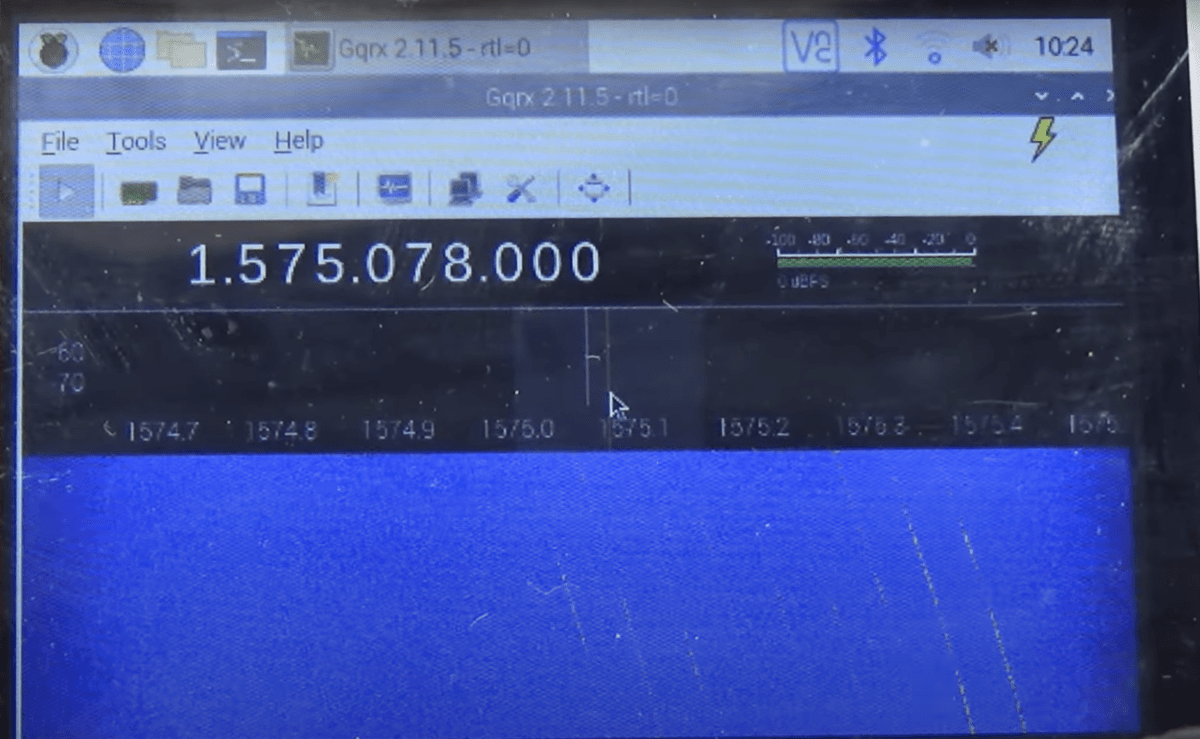Amateur mad scientist Gabe (aka saveitforparts) has repurposed his Raspberry Pi-powered Tricorder and taught it to detect Starlink satellites passing overhead.
The device doesn’t actually get satellite internet, but it can pick up Starlink’s beacon signal via Ku-band radio beacons.
What do all these words mean?
Starlink is a satellite internet constellation operated by SpaceX. SpaceX is one of Elon Musk’s things.
The Ku band is part of the electromagnetic spectrum — the kind of energy that includes visible light and, in this case, radio waves. It’s in the microwave range of frequencies, from 12–18 GHz. The Ku band is used for direct broadcast satellite television services, as well as some specific spacey things such as the tracking satellite NASA uses to talk to the International Space Station, and this SpaceX application.

Hardware


The LNB is the most important part of the build. It’s the little plastic bit that sits on the end of the sticky‑out arm part of the dish and receives satellite reception. This bit is what converts all the Ku-band signals into something the homemade Tricoder can actually read.
Want more from this maker?
If you’re into weird stuff like potato guns and airboats built from discarded parts, subscribe to saveitforparts for weekly updates from this outdoors-y maestro of junk.